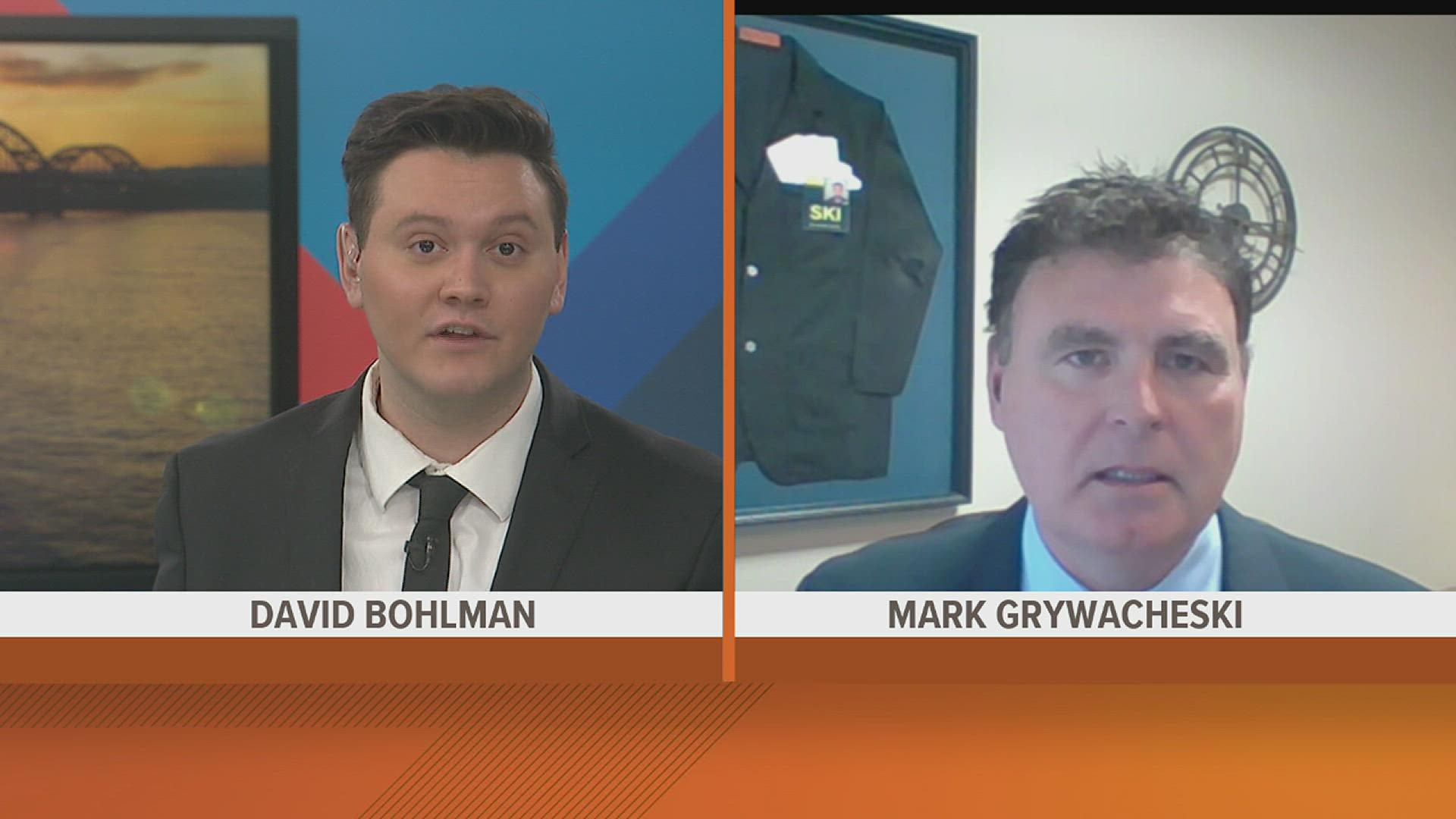MOLINE, Ill. — The Consumer Price Index remains one of the most closely watched and highly anticipated economic reports for the public. It's a monthly report that shows where we are with inflation.
On Oct. 13, the Consumer Price Index for September was officially released.
Financial advisor Mark Grywacheski joined Good Morning Quad Cities' David Bohlman live on the show to discuss the report's bad news.
Grywacheski: In the month of September, consumer prices rose another 0.4%. Now, the national rate of inflation did decline from 8.3% in August to 8.2% in September. But this means that consumer prices, on average, are still 8.2% higher than they were 12 months ago. And this 8.2% inflation rate is above the 8.1% that Wall Street had forecast.
And when you look at what's called "core" inflation, which strips out the more volatile and seasonal food and energy prices, it provides a more stable trend on where inflation is going.
"Core" inflation in September surged to a new 40-year high.
So, to summarize, inflation is still running much hotter than expected and is likely to remain historically high for the next couple of years.
Bohlman: Over the past 3 months, we've seen inflation decline slightly from 9.1% in June to its current rate of 8.2%. But you argue we could see another upward spike in inflation within the next few months. Why is that?
Grywacheski: The main contributor behind this three-month decline in inflation was a drop in global crude oil prices on concerns the U.S. and global economies are heading towards recession. When you're in a recession, consumers, businesses and manufacturers use less energy.
But on October 5, Russia and OPEC, which combine for roughly 40% of the world's crude oil production, agreed to reduce their production output by 2 MBPD (million barrels per day). This production cut, combined with reduced production by America and the disruptions caused by Russia's invasion of Ukraine, is expected to place further strain on global crude oil supplies and send crude oil prices higher.
Two weeks ago, a barrel of U.S. crude oil was $76. Friday Oct. 14, it closed at $85. And Wall Street is expecting it to rise to $100-per-barrel by year-end.
And those higher crude oil prices translate to higher consumer costs, manufacturing costs, shipping and transportation costs, all of which is expected to drive inflation higher over the upcoming months.
Bohlman: As we get closer to the winter season, how is this disruption to the energy markets expected to impact home heating bills?
Grywacheski: On Wednesday, the U.S. Energy Information Administration predicts that the average home heating bill will be 28% higher than last year. It cited these surging energy costs and a slightly colder winter. But 28% is just an average, and your heating bill is ultimately dependent on how you heat your home.
If we start to see another energy crunch like the one we saw in late spring or early summer, these home heating bills could easily soar much, much higher.
Quad Cities Investment Group is a Registered Investment Adviser. This material is solely for informational purposes. Advisory services are only offered to clients or prospective clients where Quad Cities Investment Group and its representatives are properly licensed or exempt from licensure. Past performance is no guarantee of future returns. Investing involves risk and possible loss of principal capital. No advice may be rendered by Quad Cities Investment Group unless a client service agreement is in place.
Watch "Your Money with Mark" segments Mondays during the 6 a.m. hour of Good Morning Quad Cities or on News 8's YouTube channel.

